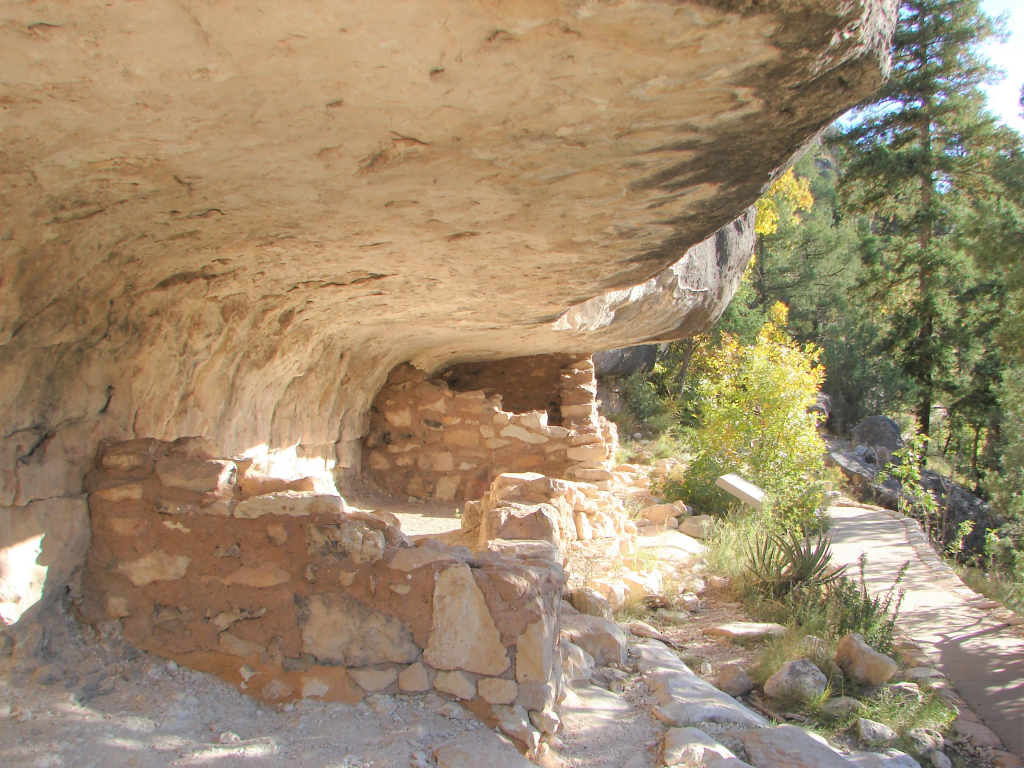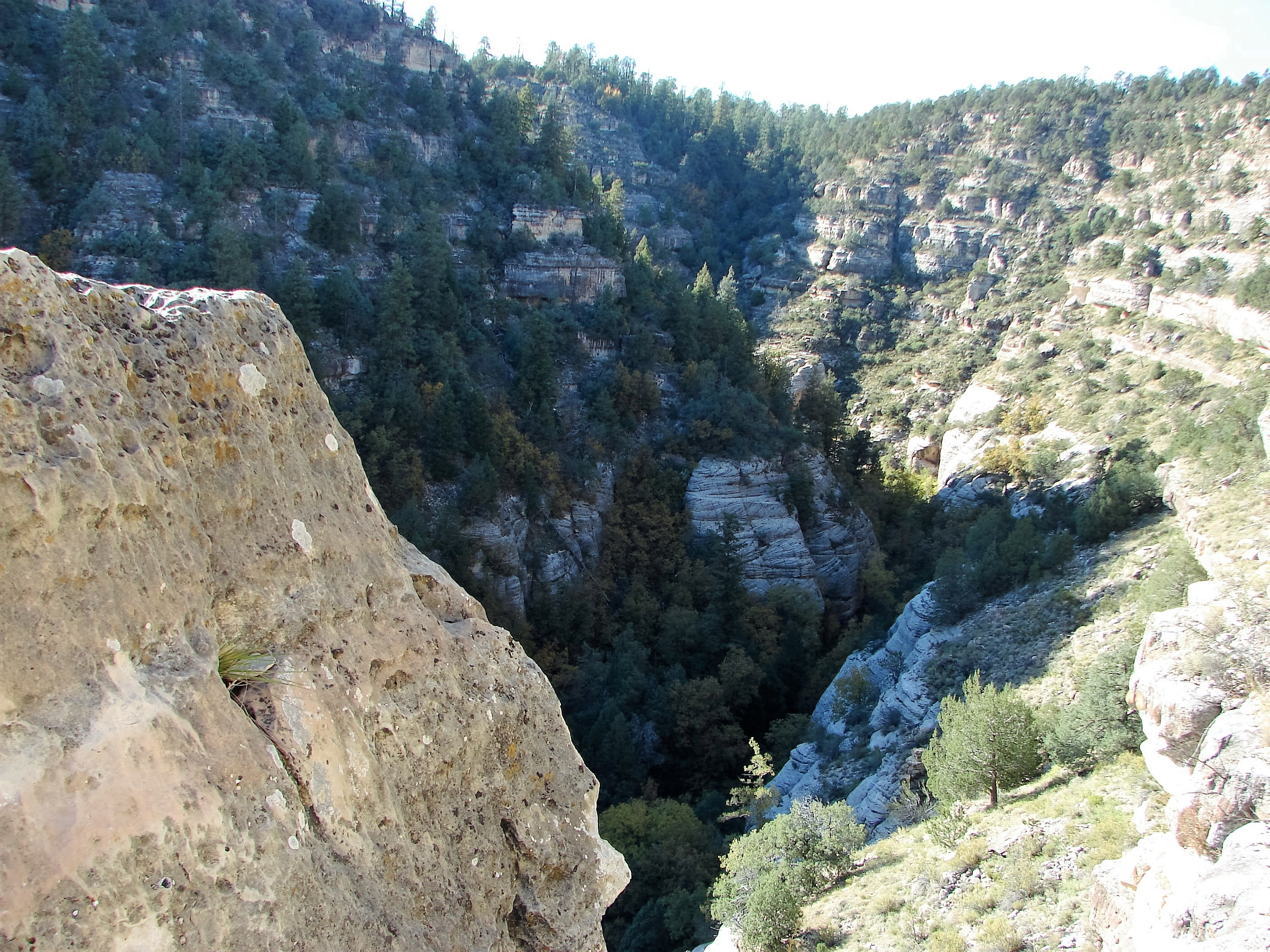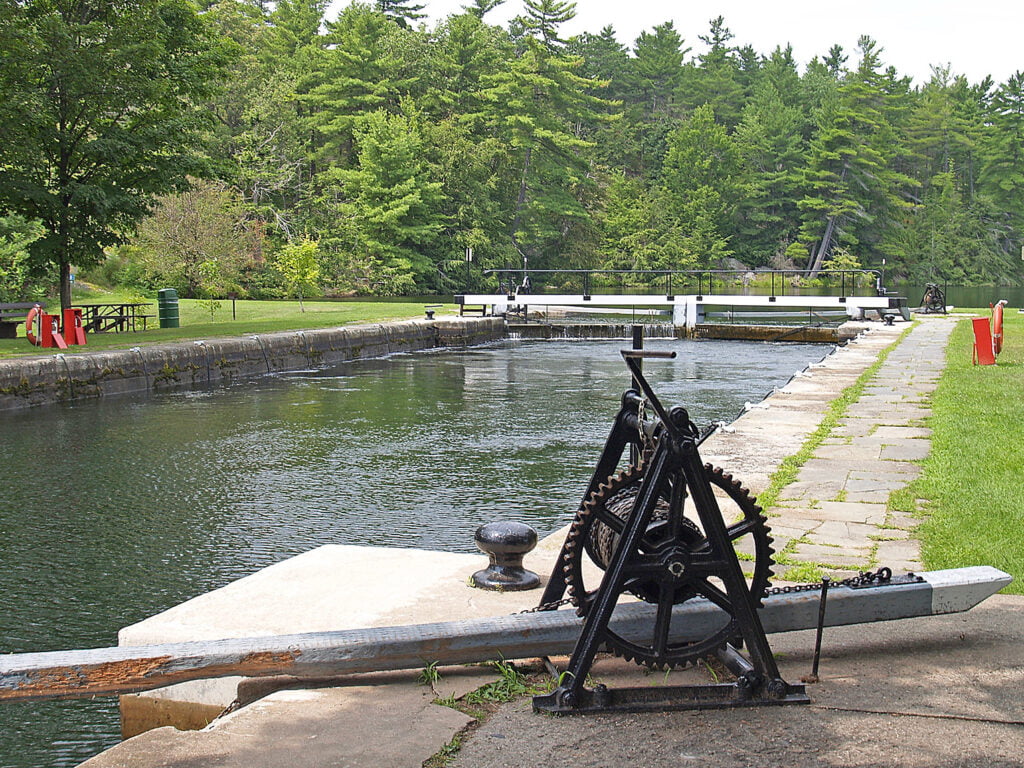It was October; Linda and I had driven one hour to Walnut Canyon National Monument from our campground at Grand Canyon Railway, Hotel, or RV park. We had taken this RV side trip on the recommendation of strangers; they insisted we visit Walnut Canyon and its 900-year-old cliff dwellings while staying in northern Arizona. Unfortunately, the Cliff Dwellings are only accessible down 273 steps carved into the Canyon wall.
Grand Canyon Railway
Imagine the smell of wood smoke as the engine pulls the refurbished passenger cars out of Williams, Arizona. In the distance, green pine and yellow aspen trees show their Fall colour contrasts, and small herds of bison, cattle, and elk roam the prairie. The rhythmic sound of wheels complements your other senses, creating images in your mind of the old West as the train crosses the virgin prairie towards the South Rim of the Grand Canyon.
Armed Robbery
Suddenly, the passenger cars lurch forward, and the train slows. The sound of locked steel wheels sliding on the rails. Masked riders with handguns drawn leap from their horses onto the moving train. Shots are fired, and the distinctive smell of gun smoke fills the carriage; Linda is pulled to her feet and held for ransom.
Strangers Become Friends
“This is fun,” said Alison, sitting opposite us in the passenger car.
“I enjoy this kind of entertainment,” her husband Brent added, “But we went to Walnut Canyon yesterday. That was an experience I will never forget. Nine hundred years ago, the people there had to protect themselves from roving bands of thieves, so they built a community into the sides of a 700-foot rock pillar within Walnut Canyon. A single trail leads down from the Mesa and prairie above them. The Grand Canyon is massive, but you see it all at a distance. At Walnut Canyon, you are in it; you can touch the walls. You stand in people’s homes; these homes were built 400 years before Columbus discovered the Americas. “
Three Days Later
We turned off the I40 and onto the three-mile-long, paved forest road to the Walnut Canyon National Monument Visitor Center three days later.
The Visitor’s Center
The car park and the buildings of the visitor centre are wheelchair accessible.
The visitors centre, with its photographs and video displays, gives visitors history and facts. However, if you consider yourself fit and want to experience how these people lived on the face of a cliff, you must walk out of the visitor’s centre’s back door and over the edge of the Mesa.
The Island Trail – A Two-Hour Walking Tour
The 273 steps down are only the beginning of a two-mile Island Trail. A two-hour-long trail that brings you back to these steps leading up to the Visitors Center. A hike was taking you one thousand years into the past with information signs posted along the route. You pass the restored cliff homes and game trails leading to the valley and water supply far below. These people were farmers and hunters on the Mesa above. But for family protection, they lived and played on the face of these cliffs in community homes. Homes that utilize the natural erosion of the soft silt layer on the cliff’s side. Silt laid down between massive layers of limestone millions of years ago and eroded with time. On the almost flat lower layer of limestone, they built the walls of their homes. Above their head, another layer of limestone protected them from the weather and the arrows of their enemies.

Standing in the Walnut Canyon homes built in the 11th century
Remains of large water storage jars and baskets indicate that some rooms were used to store water, food, and weapons. This society was always ready for attack.
As parents, we think twice about letting our children go to the corner store. Yet, these cave-dwelling people would not hesitate to send the children 300 feet down the game trails to bring back water. One slip would send a child hundreds of feet down to the rocks, the rushing water, and a waiting mountain lion on a Limestone ledge.
At The End of The Trail
At the trail’s end, you must climb the 273 steps back to the visitor center.
The Rim Trail
The paved and level Rim Trail treats you to stunning views of the Canyon and a large pueblo at the side of the trail. In addition, you can see numerous Cliff dwellings built into the distant cliff face from the railing-protected overlook.
Who Were These Ancient Peoples?
Archaeologists have pieced together a mosaic of life as it probably was, from pieces of plain brown pottery, tools, and bits of baskets in conjunction with lifestyle indicators—their research points to the Ancestral Puebloan (Anasazi) and the Sinagua people. The Hopi people also claim the Walnut Canyon trail was part of their annual migration route. They say this is where they foraged for walnuts on the trees in the valley below.
End Your Visit with A Time of Reflection.
Take the time to study your observations and draw your conclusions about these ancient people who lived and died without knowing the world as we know it.




